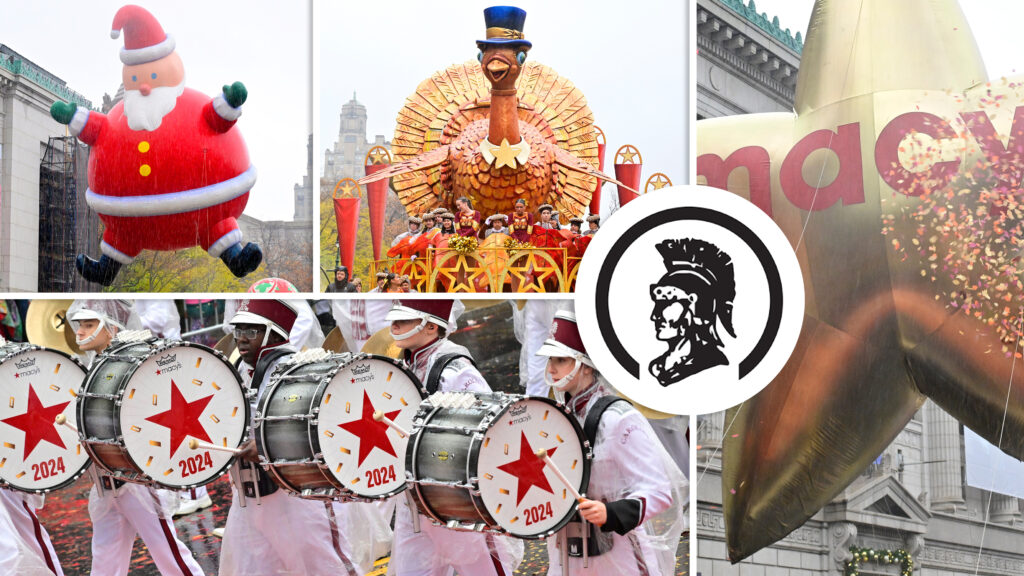
2006 Blue Knights
Performance excerpt of the 2006 Blue Knights.
The music was largely angry and unforgiving, but in a subdued and restrained manner, accompanied by swirls of jumping masses of marchers. This was especially true in the concerto’s third movement, the 5/8 “Allegro molto.” A repetitive mallet motif was joined by an ominous melody by the tubas, fragments of the melody then segmented in various segments of the horns from different locations on the field. Often, the front ensemble was regarded as the pianist in Barber’s original score and the brass and percussion as the orchestra. “Canzone: Moderato” briefly re-appeared; its darkly harmonic, melancholy melody providing a respite from the overwhelming angst that bookended the lovely chorale. But the consoling beauty of the interlude was quickly interrupted by the “Allegro molto” movement, where all the brutality of Barber’s angst-ridden passion was cut loose with abandon. With the keyboards outlining the flurry of pianistic abstractions of the harmonic material serving as an underlying ostinato, the horns unleashed a series of sharp jabs that cut through the air as a blazing-hot sword would cut through a quivering stick of soft butter. After a sudden break in the music, the mallets slowly built up speed as the guard coalesced toward the front and center of the field, with the horn players crouching and observing the proceedings. During what was a piano cadenza in the original, the horns then, well, let me quote from my World Championships Finals blog that year: “My personal favorite part of the show, one of my most favorite moments in any show this year, is the swirling mass of humanity that comes across like a spinning collection of gases forming into a star in the outer reaches of the solar system. And then the corps marches out of it as if pulling the drapes open on a day greeting us outside with the explosion of a hydrogen bomb. Nothing too cataclysmic, just a little drum corps with a side order of upheaval and calamity.” There to the end, with its vivid abstractions of angry piano and orchestral outbursts, the show made no attempt to convert anyone who was still on the fence regarding its accessibility. You were either sold on the idea by then or you weren’t. But if you had been assimilated, the final two minutes was a brainwave pounding, stilettos-to-the-ear drums, head thrashing equivalent of riding atop a mosh pit at a heavy metal concert. The sheer ruthlessness of the music, culminating with the entire horn line crouching upon the conclusion, was a final slap across one’s quaking consciousness, akin to being shaken awake as a warning to get out of the road, just after being run over by a truck. This week only, you can save on 2006 World Championship Audio and Video Performance Downloads on the DCI Fan Network. Buy the 2006 Blue Knights Video Performance Download. (Available this week only for $3.99. Regular price: $4.99.) Buy the Audio Performance Download bundle of all 12 Finalists from 2006. (Available this week only for $15.99. Regular price: $19.99.) Offer ends Monday, April 2 at 8:30 a.m. ET.

Michael Boo was a member of the Cavaliers from 1975-1977. He has written about the drum corps activity for more than a quarter century and serves as a staff writer for various Drum Corps International projects. Boo has written for numerous other publications and has published an honors-winning book on the history of figure skating. As an accomplished composer, Boo holds a bachelor's degree in music education and a master's degree in music theory and composition. He resides in Chesterton, Ind.





